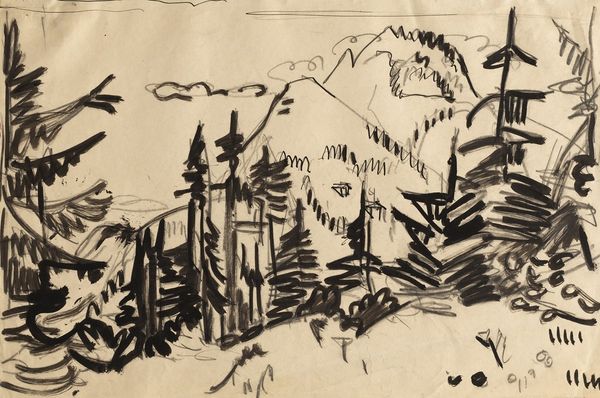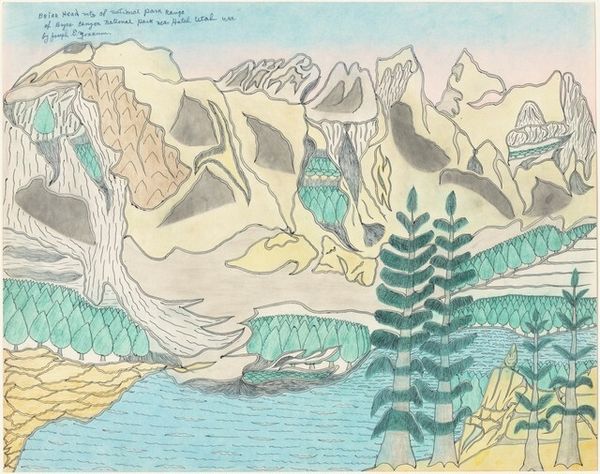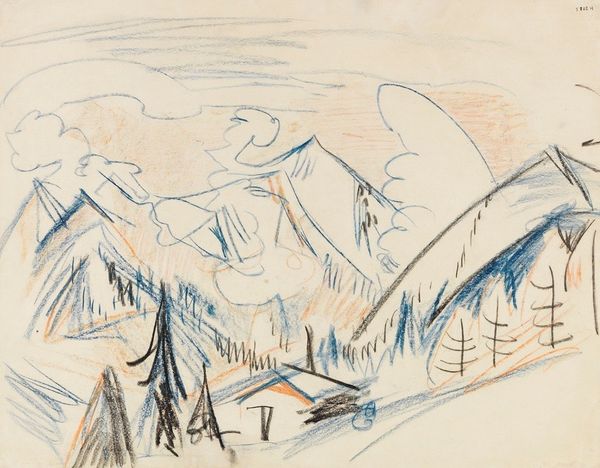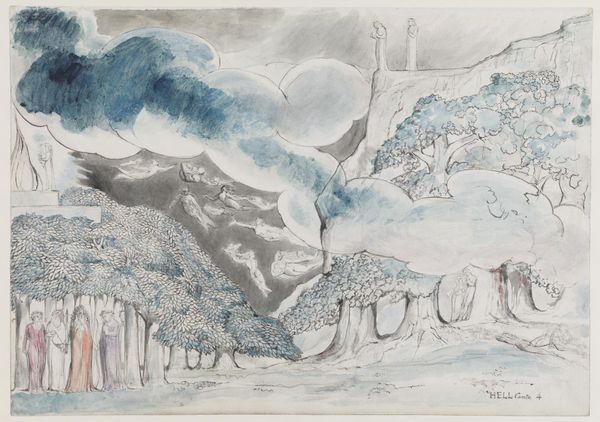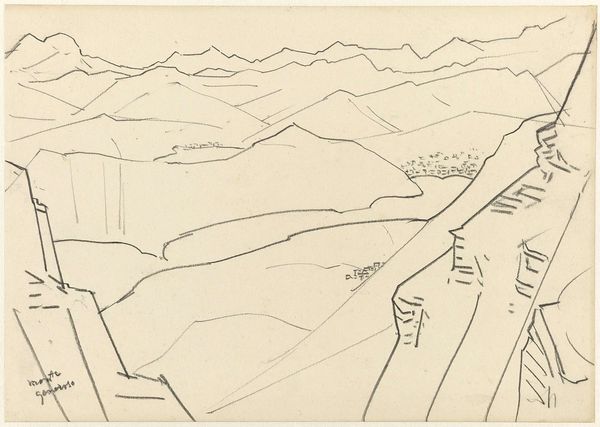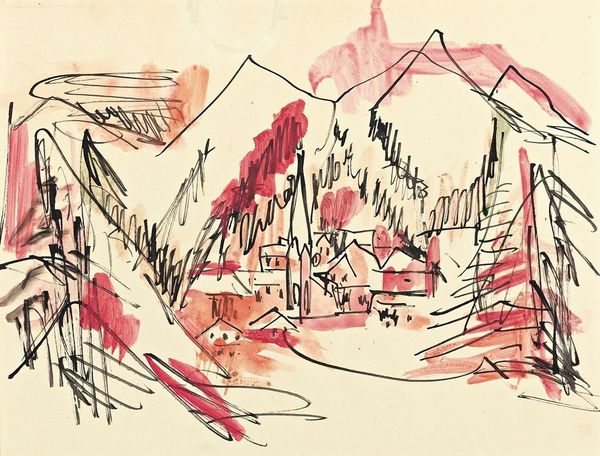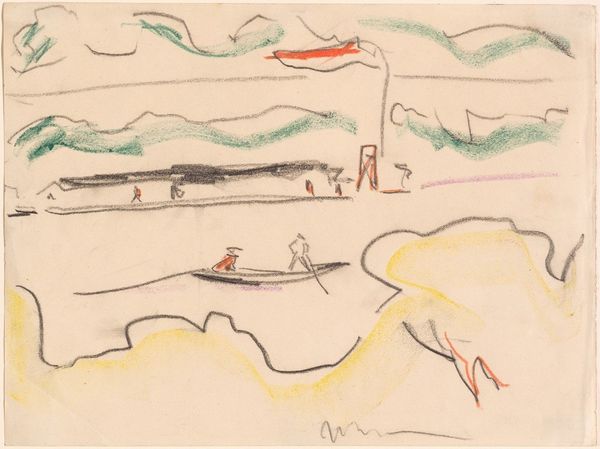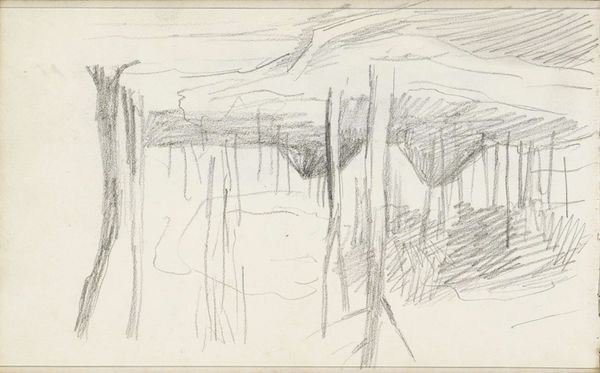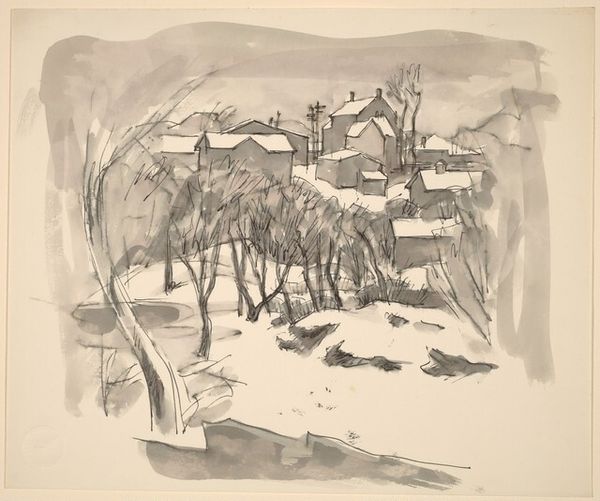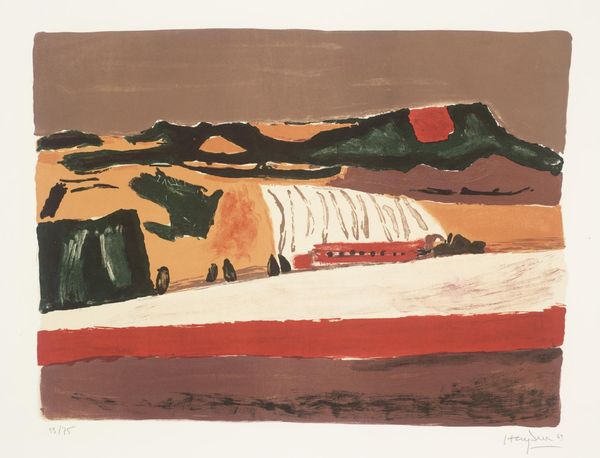
Copyright: Public Domain: Artvee
Curator: I’m immediately drawn to this evocative sketch, “Landschaft bei Davos,” created circa 1937 by Ernst Ludwig Kirchner. The media consist of ink on paper, lending a certain rawness to the overall feel. Editor: Raw is the perfect word! It feels like a half-remembered dream, a fleeting moment captured with restless energy. There’s a nervous intensity to the lines, as if the landscape itself is vibrating. Curator: Yes, that sense of vibrancy aligns with Kirchner’s Expressionist style, where emotional experience trumps literal representation. Notice how the ink is used; not just to outline forms, but to create textures, layering shadows and giving the scene depth despite its spare nature. It's an economy of line that speaks volumes, almost like a form of visual shorthand. We get all the essentials of trees, mountains, a path... everything is there with the fewest of strokes. Editor: Absolutely. I love how the dark washes create these looming shapes that could be hills or just amorphous presences. The eye sort of has to piece the scene together, and I think that active participation is part of what makes it so engaging. The whole thing has a very melancholy and introverted vibe. Does it remind you of anything particular? Curator: Knowing the context of Kirchner's later life, I find it hard not to see it as reflective of his growing isolation and anxieties. He retreated to Davos in Switzerland, seeking solace from the turmoil in Germany, but of course, those internal conflicts can find expression even in seemingly peaceful landscape studies. Editor: And I'm guessing the monochrome palette reinforces that feeling of restrained emotion, compared to his vividly colored urban scenes? Curator: Precisely. By stripping away the vibrant colors often associated with Expressionism, Kirchner channels the anxiety in more subdued ways, relying on the contrast of light and shadow to express psychological tension. I see a dialogue between confinement and release, much like Kirchner’s own internal state. The fenced path hints at constraints, while the suggestion of the open mountain peaks represents the yearning for escape. Editor: I'd buy that interpretation. What seemed initially like a casual sketch opens up, layer by layer, like the terrain itself! Curator: A rewarding thing, that happens often when we observe a work of art.
Comments
No comments
Be the first to comment and join the conversation on the ultimate creative platform.
